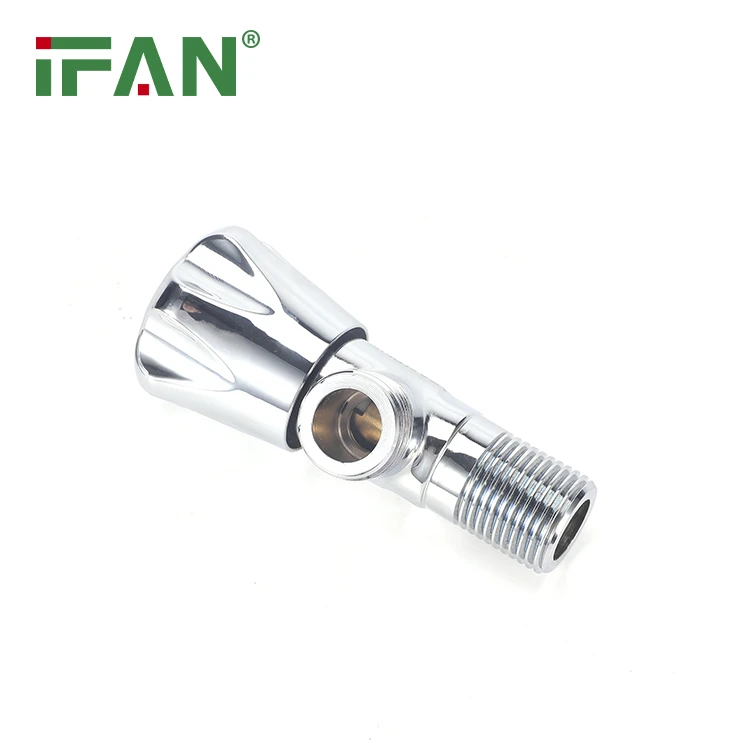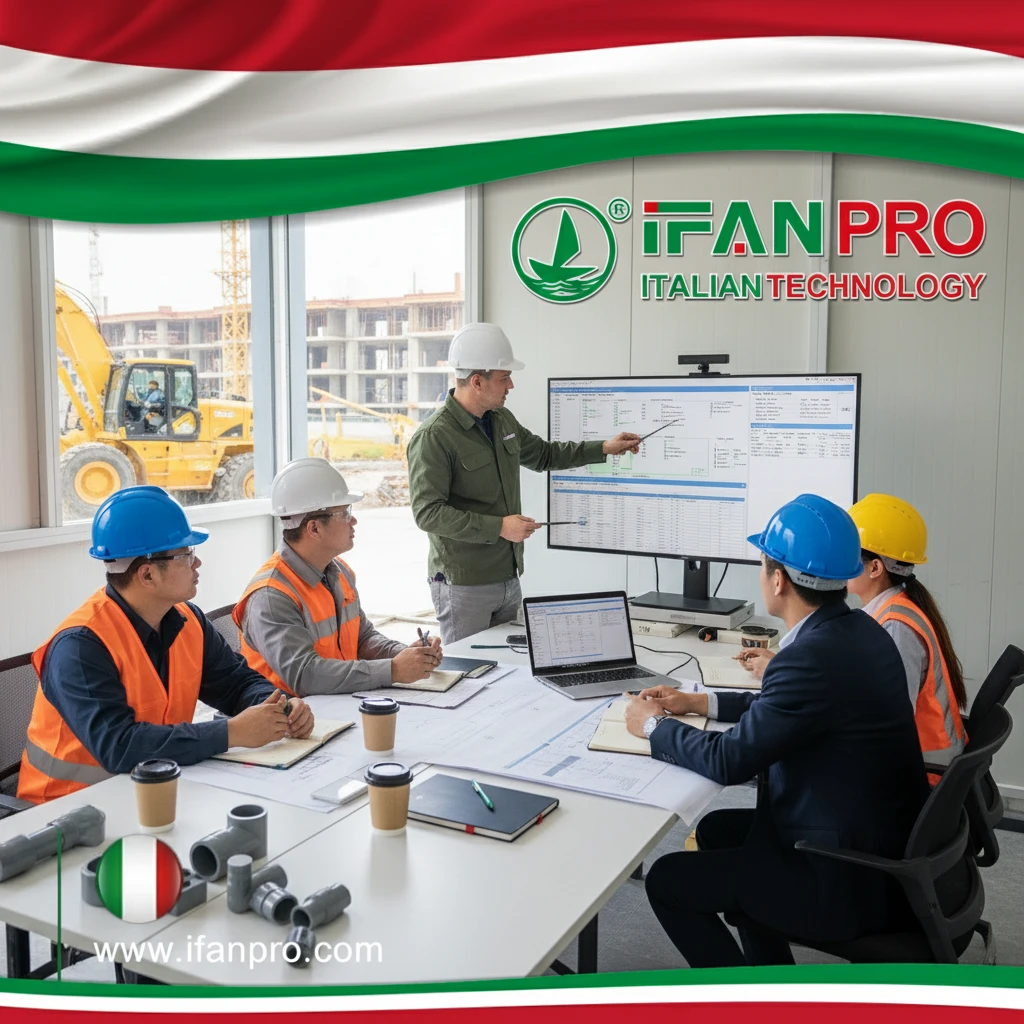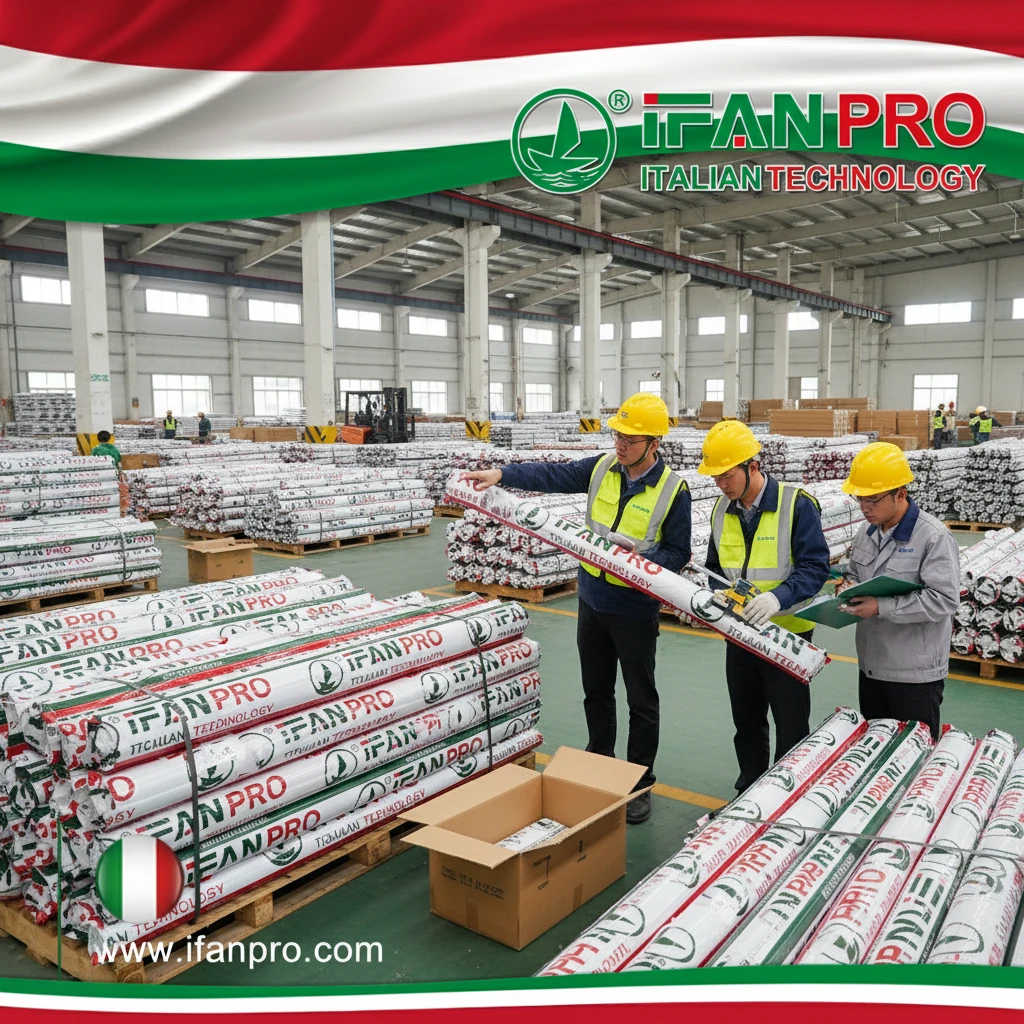During a recent hotel renovation, we encountered six different pipe types in the same building. This challenge taught me that while angle valves can work with most pipes, selecting the right connection type is crucial for leak-free performance and long-term reliability.
Angle valves work with most common pipe types when matched with the proper connection method, though specific valve designs are optimized for particular materials. Copper pipes typically use compression or solder connections, PEX systems require insert or compression fittings, while galvanized steel needs threaded connections for secure installation.
Understanding the relationship between valve types and pipe materials ensures proper selection and prevents installation issues. Let’s examine the connection options and compatibility factors for different plumbing systems.
What Are the Main Connection Types Available for Different Angle Valves?

I recently inventoried our service truck and found we carry angle valves with seven different connection types. This variety isn’t overkill—each project demands specific solutions, and having the right connection available saves time and prevents makeshift adaptations that often lead to leaks.
The five main angle valve connection types include compression fittings for copper and plastic pipes, threaded connections for iron and steel pipes, solder ends for permanent copper connections, push-to-connect for quick PEX installations, and transition fittings for connecting different pipe materials within the same valve assembly.
Connection Type Applications
Each connection method serves specific purposes:
Compression Connections
These popular valves use a compression nut and ferrule that deform around the pipe when tightened. They work well with:
- Copper pipes (soft and rigid)
- PEX tubing
- CPVC pipes
- Stainless steel lines
The compression mechanism creates a metal-to-metal seal that maintains integrity through temperature changes and minor vibrations.
Threaded Connections
Traditional threaded valves come in various thread standards:
- NPT (National Pipe Taper) for North America
- BSP (British Standard Pipe) for international projects
- MIP/FIP (Male/Female Iron Pipe) threads
These work with galvanized steel, black iron, brass, and some plastic pipes with threaded adapters.
Solder End Valves
Also called “sweat” fittings, these require soldering for permanent installation:
- Used exclusively with copper pipes
- Provide the most compact connection
- Offer maximum reliability when properly soldered
- Require heat application skills
Specialized Connection Systems
Modern valves include innovative connection methods:
Push-to-Connect Valves
These newer systems feature:
- No tools required for installation
- Internal grip rings and O-rings
- Simple disconnect mechanisms
- Compatibility with PEX, copper, and CPVC
Transition Valves
Multi-material valves incorporate:
- Different connection types on each port
- Built-in adapters for material transitions
- Elimination of separate transition fittings
- Reduced connection points
How Do You Choose the Right Angle Valve for Copper Versus Plastic Pipes?
Last month, I corrected an installation where a contractor used PEX-specific valves on copper pipes, resulting in multiple leaks. The resulting water damage demonstrated how material compatibility affects valve performance beyond simple connection methods.
Choose angle valves specifically designed for each pipe material: compression or solder valves for copper pipes, insert or push-fit valves for PEX, and solvent-weld valves for CPVC. The valve’s internal construction, pressure rating, and connection mechanism must match the pipe material’s characteristics and thermal expansion properties.
Copper Pipe Valve Selection
Copper pipes require valves that match their rigid nature:
Solder Valve Advantages
- Permanent, reliable connections
- Compact design saves space
- Maximum flow characteristics
- Professional appearance
Compression Valve Benefits
- No heat required for installation
- Serviceable connections
- Good for tight spaces
- DIY-friendly installation
Copper-Specific Considerations
- Match valve metallurgy to prevent galvanic corrosion
- Consider water chemistry (acidity/alkalinity)
- Account for copper’s high thermal conductivity
- Remember copper’s expansion characteristics
Plastic Pipe Valve Selection
Plastic pipes demand different valve features:
PEX System Valves
- Insert fittings with crimp or clamp rings
- Push-to-connect systems
- Brass construction (not plastic valves)
- Support for PEX expansion
CPVC System Valves
- Solvent-weld connections
- CPVC-compatible sealants
- Temperature rating matching CPVC limits
- Chemical compatibility with cement
Selection Guide
Use this reference table for proper valve selection:
| Pipe Material | Recommended Valve Types | Pressure Rating | Temperature Limit |
|---|---|---|---|
| Copper Type L | Solder, Compression | 400 PSI | 350°F |
| PEX-A | Expansion, Push-fit | 160 PSI | 200°F |
| PEX-B | Crimp, Clamp, Push-fit | 160 PSI | 180°F |
| CPVC | Solvent-weld, Threaded | 100 PSI | 180°F |
| Galvanized Steel | Threaded | 150 PSI | 250°F |
What Installation Considerations Ensure Proper Angle Valve Function with Various Pipes?
We once responded to an emergency call where improperly supported angle valves had cracked from pipe stress. The investigation revealed that each pipe type required different support strategies, leading us to develop material-specific installation protocols.
Proper angle valve installation requires material-specific preparation: cleaning and deburring copper pipes, using insert stiffeners with PEX, applying correct primer and cement with CPVC, and proper thread sealing with steel pipes. Adequate pipe support, correct orientation, and access for operation are universal requirements across all materials.
Pipe-Specific Installation Techniques
Each material demands unique preparation:
Copper Pipe Preparation
- Cut square with tube cutter
- Remove all internal and external burrs
- Clean oxidation from soldering areas
- Apply flux evenly for solder connections
- Ensure dry pipes for compression fittings
PEX Installation Requirements
- Use PEX insert stiffeners
- Cut precisely with PEX cutter
- Support pipes within 6 inches of valve
- Allow for thermal expansion
- Avoid over-tightening compression fittings
CPVC Installation Protocol
- Use CPVC-specific cutter
- Apply purple primer before cement
- Use heavy-bodied cement for valves
- Support against sagging
- Allow proper cure time before pressure
Universal Installation Principles
Regardless of pipe material, follow these rules:
Support Requirements
- Support pipes within 6-12 inches of valve
- Prevent valve from supporting pipe weight
- Allow for thermal movement
- Use appropriate hangers for material
Orientation and Access
- Install with handle accessible
- Allow full rotation without obstruction
- Position for easy service access
- Consider future maintenance needs
Can Angle Valves Handle Different Pressure Ratings Across Pipe Materials?
A commercial building experienced repeated valve failures until we discovered the valves were rated for higher pressure than the PEX pipes they connected to. The pipes failed at the connections, demonstrating that system pressure capacity depends on the weakest component, not just the valve rating.
Angle valves must be matched to the pressure rating of the connected pipes, as the overall system capacity is limited by the weakest component. While brass valves typically withstand 300-600 PSI, plastic pipes may fail at 100-160 PSI, making material compatibility crucial for pressure integrity.
Pressure Rating Analysis
Understanding system pressure dynamics:
Valve-Only Pressure Ratings
- Standard brass valves: 125-300 PSI WOG (Water, Oil, Gas)
- High-pressure bronze valves: 400-600 PSI
- Plastic valves: 100-150 PSI
- Temperature affects all pressure ratings
System Pressure Limitations
The actual system capacity depends on:
- Pipe material pressure rating
- Connection method strength
- Temperature of operation
- Water hammer potential
Material-Specific Pressure Considerations
Each pipe material has unique pressure characteristics:
Coper Pipe Systems
- Type M copper: 200 PSI @ 100°F
- Type L copper: 200 PSI @ 100°F
- Type K copper: 200 PSI @ 100°F
- Soldered joints maintain pipe strength
- Compression fittings may reduce rating slightly
Plastic Pipe Systems
- PEX tubing: 160 PSI @ 73°F
- CPVC pipe: 100 PSI @ 73°F
- PVC pipe: 150 PSI @ 73°F
- Ratings decrease significantly with temperature
- Connection methods affect overall strength
Pressure Management Strategies
Ensure system reliability through:
Proper Valve Selection
- Match valve rating to system requirements
- Consider maximum operating temperature
- Account for potential water hammer
- Choose materials for pressure cycling resistance
System Protection
- Install pressure-reducing valves where needed
- Include thermal expansion tanks
- Use water hammer arrestors
- Implement pressure relief valves
Conclusion
Angle valves can work with all common pipe types when properly selected and installed, but success requires matching connection types to specific pipe materials while considering pressure ratings, installation requirements, and material compatibility to ensure leak-free performance and long-term reliability.













Commentaires récents